The massive 2021 infrastructure act aimed to fight climate change. Is it living up to Biden's pledge?
- Oops!Something went wrong.Please try again later.
When President Joe Biden signed the $1.2 trillion Infrastructure Investment and Jobs Act last November – commonly known as the bipartisan infrastructure bill – he and other proponents noted it would be the largest investment in infrastructure in a generation.
But they also promised it would be something else: a historic effort to tackle climate change. Although it didn't devote hundreds of billions of dollars directly to the climate fight as the Inflation Reduction Act did this year, the administration said the infrastructure bill would help transition the nation to cleaner sources of energy while electrifying the transportation sector and preparing roads and bridges for a changing world.
“President Biden’s Bipartisan Infrastructure Deal passed by Congress will strengthen our nation’s resilience to extreme weather and climate change while reducing greenhouse gas emissions, expanding access to clean drinking water, building up a clean power grid, and more,” a statement from the White House asserted in November 2021.
INFRASTRUCTURE BILL: 'We're finally getting this done': Biden signs landmark infrastructure package in major win for domestic agenda
Promises were numerous:
Roads and bridges: $110 billion to “repair and rebuild our roads and bridges with a focus on climate change mitigation, resilience, equity, and safety."
More public transit: $105 billion for public transit and rail, which would “eliminate the Amtrak maintenance backlog” and otherwise cut down greenhouse gas emissions from the transportation sector by electrifying public transit.
Better grid: $65 billion for “the largest investment in clean energy transmission and the electric grid in American history.”
Cleaner water: $15 billion to “replace all of the nation’s lead pipes and service lines” and about $35 billion more to further upgrade drinking and wastewater infrastructure.
EV chargers: $7.5 billion to “build out the first-ever national network of EV chargers in the United States."
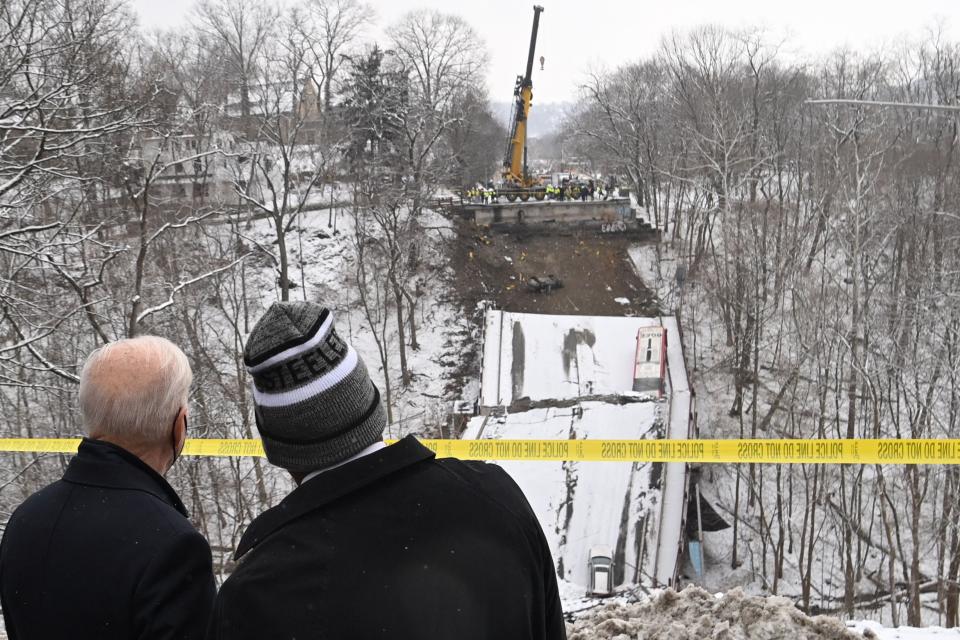
Experts say that as funding from the law begins to roll out, Americans will soon see upgrades like electric school buses, followed by a growing network of electric vehicle charging stations. But they also warn that funding from the bill probably won't result in dramatic changes in the way Americans and electricity move throughout the country, limiting the overall climate impact.
USA TODAY spoke to a variety of climate and transportation experts to look more closely at whether the bill's promises are meeting reality.
Bill likely won't lead to transportation transformation
Though experts said it's too early to fully judge the bill on its climate merits – spending will primarily be portioned out over five or 10 years – many agreed on two conclusions.
First, the bill is indeed historic in its commitment of money and focus on climate. Experts said that in most cases the Biden administration is working diligently to ensure a good rollout. Among other measures, the U.S. Department of Transportation is crafting a new regulation to pair about $27 billion in funding with an effort for states to track and lower greenhouse emissions from transportation.
MORE ON CLIMATE CHANGE: Humanity healed the ozone hole. Can we do the same for climate change?
MORE ON CLIMATE CHANGE: Elon Musk says 'population collapse' is a bigger threat than climate change. Is he right?
But others say that because of continued prioritization of roads and cars and a lack of accountability at the state level, they don't expect the bill to revolutionize the transportation or energy sectors, which together account for more than half of U.S. greenhouse gas emissions.
"Most Americans do not have access to transit or certainly not good transit," said Beth Osborne, director of the national nonprofit Transportation for America. “We have a lot of work to do."
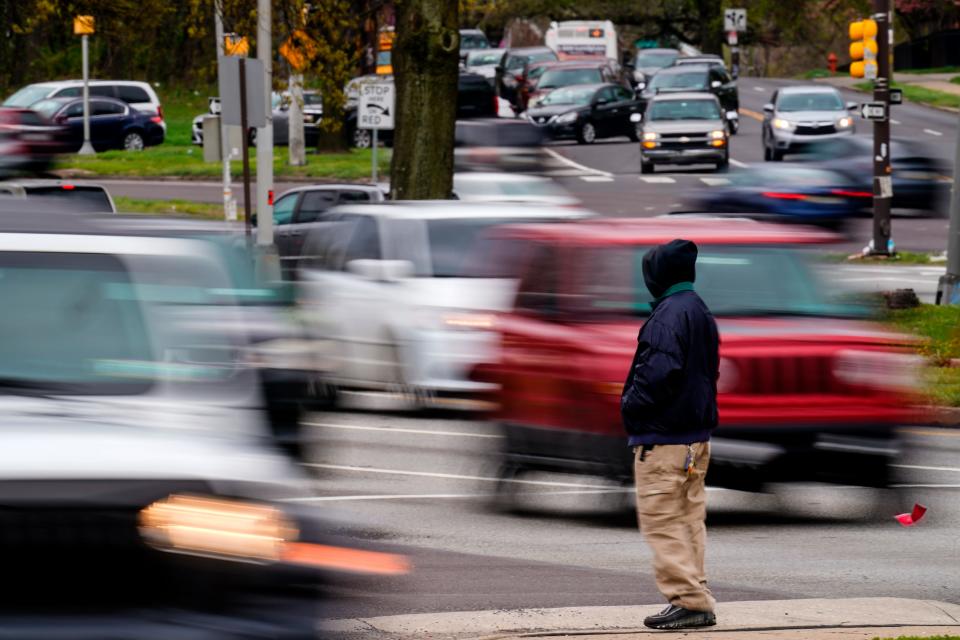
Much of the past year was spent simply laying the groundwork for awarding the funding. Money will start to roll out this fall or early next year.
Experts say administration officials have moved swiftly to set funding stipulations that meet many climate and policy groups' wish lists. Most feel the administration is doing about all it can to ensure climate change remains a priority once money is awarded to states and cities, which will actually do the spending.
“There's still a lot to do, but they've made a lot of progress since the law was enacted,” said Deron Lovaas, a senior policy adviser with the Natural Resources Defense Council (NRDC), a Washington, D.C.-based nonprofit.
But experts warn the devil's in the details, and many won't be revealed until further down the line.
Mixed results from projects with early rollouts
Of projects that have had early rollouts, results are mixed.
On one end of the spectrum, cities and schools are clamoring for money for electric school buses, generating a buzz of excitement about a rapid transition in the years ahead.
Money to replace lead service lines sits on the other side of the ledger. Experts have noted that the allocated $15 billion doesn't nearly match the actual cost of replacing every lead drinking water pipe across the country.
With the first year of state-by-state funding for lead service line replacements already set in stone, local lawmakers in states like New Jersey are decrying a formula they say unfairly awards more money to some states. Because the formula was based on overall infrastructure needs instead of the number of actual lead service lines, an NRDC analysis found states like Ohio and New Jersey get only about $100 per lead pipe, while Hawaii receives $10,000.
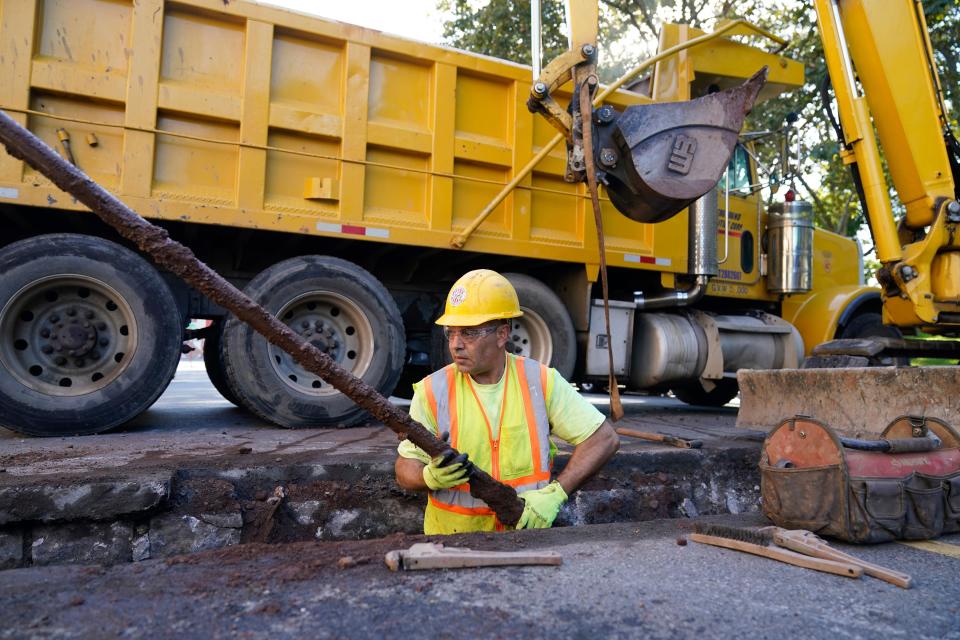
“It is shocking that the reported plan for the distribution of these funds gives some states thousands of dollars per pipe ... while the most impacted states are left to bear almost the entire cost of replacement themselves,” New Jersey state senators Troy Singleton and Linda Greenstein wrote in a letter to the Environmental Protection Agency.
The EPA says it is working to fix its funding formula in the second year of the program, but the problem points to a wider truth, experts say: The bill's money is not going to fully address the nation's infrastructure and environmental challenges.
Car infrastructure gets boost from road and highway funding
Kevin DeGood, director of infrastructure policy at the nonprofit Center for American Progress, noted that the lion's share of the bill's new spending – $110 billion – is earmarked for traditional infrastructure like roads and bridges.
That, in itself, can be problematic. For much of the past century, America's spending on transportation has revolved around the automobile, with interstate highway systems feasting as public transportation systems like trains and subways starved. Because cars and trucks emit large quantities of carbon dioxide, that legacy has now made transportation the largest emitter of greenhouse gases of any sector in the U.S. economy.
“So many people are locked into driving, because that's the only thing we built for,” DeGood said.
The fact that the bill continues to spend heavily on roadways signals that the automobile still reigns supreme. Further complicating the matter, DeGood said, is that the $110 billion in additional road and bridge funding is largely distributed to 52 state Department of Transportation agencies, including those in Washington, D.C., and Puerto Rico.
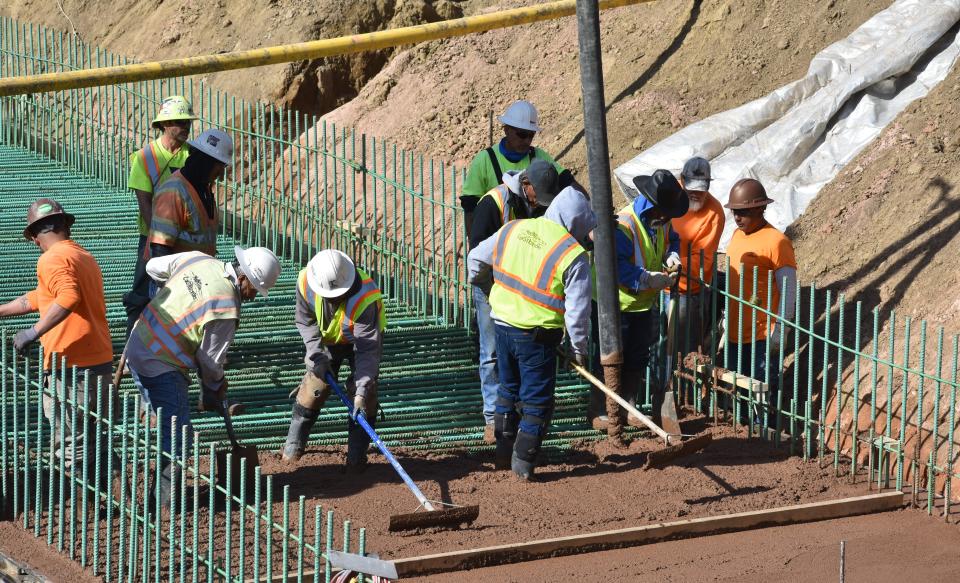
Those agencies have some flexibility in how they use the money, including for public transportation. But DeGood says that historically such departments have focused on cars by expanding roadways and building new ones and that there is little to suggest this time will be different.
When state DOT administrators “wake up in the morning,” DeGood said, “they think in terms of congestion and road widening.”
The first year of boosted road and bridge funding has already rolled out the door, and oversight on how much is actually going to climate-friendly projects is difficult because of the slushiness of state budgets, DeGood said.
Groundwork starts on electric vehicle charging station network
Reliance on the automobile can be less problematic if cars and trucks on the road are running on electricity.
Max Baumhefner, a senior attorney with the NRDC who watches the electric vehicle space, said there's mostly good news on the effort to build out a promised nationwide network of charging stations.
ELECTRIC CARS: Rolls-Royce unveils its first electric car, begins 'all-electric' goal
CHARGING TIME: NASA says its space tech could cut electric car charging times to 5 minutes or less
Although he says it will be a year or two before Americans see chargers paid for by the bill physically installed, he adds that the U.S. Department of Transportation worked swiftly to launch a National Electric Vehicle Infrastructure program, which will divvy up the $5 billion set aside for electric vehicle charging stations.
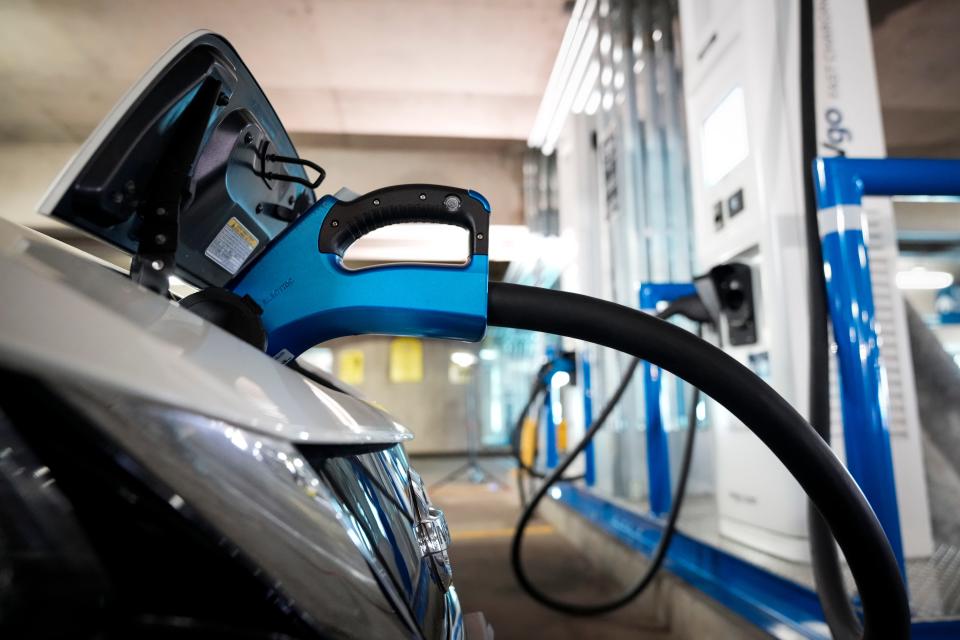
Just three months after the bill passed, the program released guidelines for states to apply for the money. Baumhefner approves of the criteria, which he says emphasizes the installation of the latest generation of fast-charging stations located strategically along heavily traveled highways.
“Fast charging is getting a lot faster,” Baumhefner said. “We're seeing a move toward charging that gets you back on the road after a cup of coffee and a bathroom break, where before it was more like stopping for lunch.”
Another $2.5 billion is earmarked for a separate community grant program that Baumhefner predicts will mostly be used to build out local charging stations. The Inflation Reduction Act passed this summer offers further billions to complement charging station development.
But Baumhefner warns of a downside: Estimates show the U.S. probably will need to spend at least $40 billion on public EV charging stations just to meet its 2030 climate goals. And that doesn't include what it will cost to charge medium- and heavy-duty vehicles like tractor trailers or hit even larger 2050 targets.
“The bottom line is that it's a historic investment, but it's not alone sufficient,” Baumhefner said.
Public transit and rail gets a smaller portion of funding
Osborne, with Transportation for America, says it's a similar story for public transportation and railways.
The bill allocated more money than ever for public transportation, which she says will largely address much-needed maintenance backlogs in cities and towns across the country. Although much of the money has yet to be used, Americans can expect to see lots of minor improvements in the years ahead: faster subways and trolleys as rail lines are repaired, older train cars and buses replaced with nicer new ones, and more frequent service.
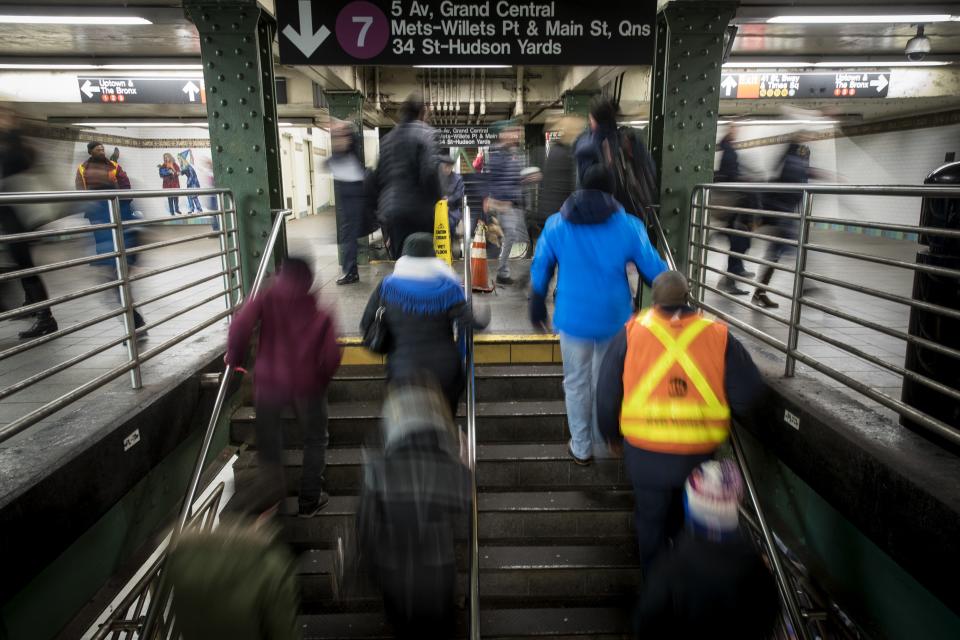
Amtrak received a particularly big boost, a nearly ninefold increase in funding from the last major transportation bill in 2015.
And perhaps the most visible transformation to Americans will be school buses. The infrastructure bill devoted $5 billion to replacing gas-powered school buses nationwide with ones running on electricity or other zero-emission fuels. In September, the EPA announced it was nearly doubling the amount of first-year funding, from $500 to $965 million, after school districts bombarded it with applications.
The agency expects to release a list of awardees this month.
“We’re working across all 50 states to accelerate the transition to a future where clean, zero-emissions school buses are the American standard,” EPA Administrator Michael Regan said in a statement.
But Osborne says there are still a lot of question marks on public transportation.
A simple boost in funding isn't enough on its own, she says, noting that federal and state officials still need to build out programs to successfully use the money. Often, such efforts can get bogged down by politics and special interests.
In one particularly thorny example, Osborne says, Amtrak wants to upgrade passenger service along the Gulf Coast on railways owned by CSX, a private company. But she says CSX has largely rebuffed the efforts based on cost claims, and the matter is now before a federal review board. How aggressively the administration approaches the dispute could foretell how serious it is about public transit.
“There is a failure to regulate and manage the rail owners according to the law,” Osborne said. “The administration has to get that straight.”
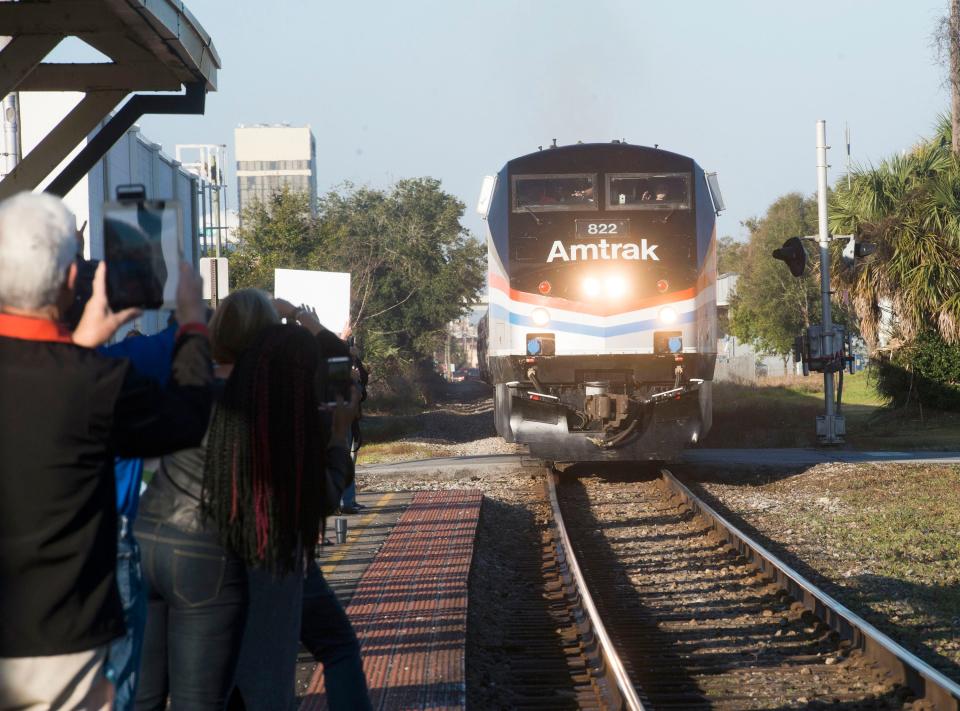
And even if policies ultimately complement the funding, Osborne says, results are still mitigated by the fact that the car remains king. There's more money than ever for rail and public transit, but the same is true for roads and highways. With the latter still getting about 80% of the pie, Osborne has serious doubts on how far the needle will move in the effort to lower greenhouse gas emissions from the transportation sector.
“It's almost entirely status quo,” Osborne said. “If we really want to make a big difference on climate and equity ... we need to build tons and tons more public transit.”
Power grid still can't support climate change goals
Experts say the country also needs to build vast amounts of new high-power transmission lines to support the shift to renewables and cut emissions from the energy sector, the second-largest emitter of greenhouse gases after transportation.
Rob Gramlich, president of power sector consulting firm Grid Strategies LLC, says such lines are essential to ensuring wind, solar and other green energy sources can travel vast distances to population centers. Demand for renewable energy generation is growing, as it is for electric cars and devices. But transmission lines linking the two are falling far behind.
“What that tells you is this going to be the big issue of the next few years,” Gramlich said.
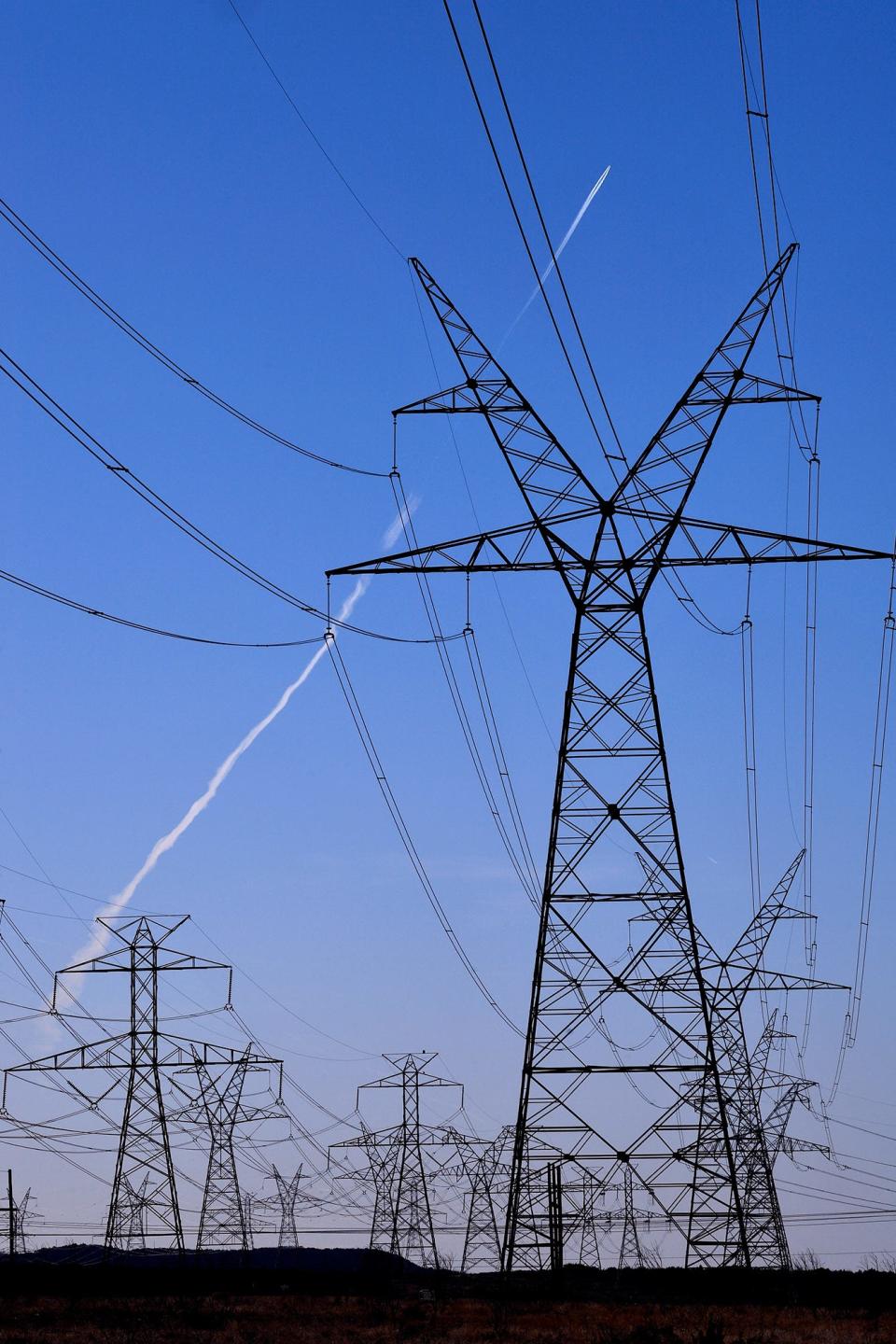
On paper, the infrastructure bill devoted $81 billion to the energy grid and power sector, the second-biggest pot of money after roads and bridges. In promoting the bill, the White House promised “thousands of miles of new, resilient transmission lines to facilitate the expansion of renewable energy.”
But, Gramlich said, the bill provided very little funding for the actual construction of such transmission lines. Most of the power and grid money made available under the law is broken into a diverse constellation of small programs, from carbon capture infrastructure to blackout prevention to nuclear energy.
A program to fund high-voltage power lines, the Transmission Facilitation Program, received just $2.5 billion and operates on a loan basis.
“That's about one month's worth of transmission spending in the country," Gramlich said. “It's marginally helpful but a far cry from anything transformative.”
More funding for water, but big challenges remain
In addition to climate change, the infrastructure bill promised to address another pressing human and environmental priority: water.
The American Society of Civil Engineers gives U.S. wastewater infrastructure a D-plus, with drinking water fairing only slightly better at a C-plus. A recent systemwide collapse that put more than 150,000 residents of Jackson, Mississippi, under a boil-water advisory highlighted the harm that can come from neglect.
The infrastructure bill promised to address such problems. It pumped about $50 billion into the water sector, about a fivefold increase over prior funding levels.
That's welcome news in cities such as El Paso, Texas, where a fresh infusion of $20 million from the bill will help pay for an advanced water recycling facility set to begin construction next year, bringing a sustainable water source to the drought-stricken city.
“This facility is the game changer in the nation’s efforts to secure safe and reliable water supply for ratepayers throughout the West and nationwide,” Pat Sinicropi, executive director of the trade group WateReuse Association, told the El Paso Times.
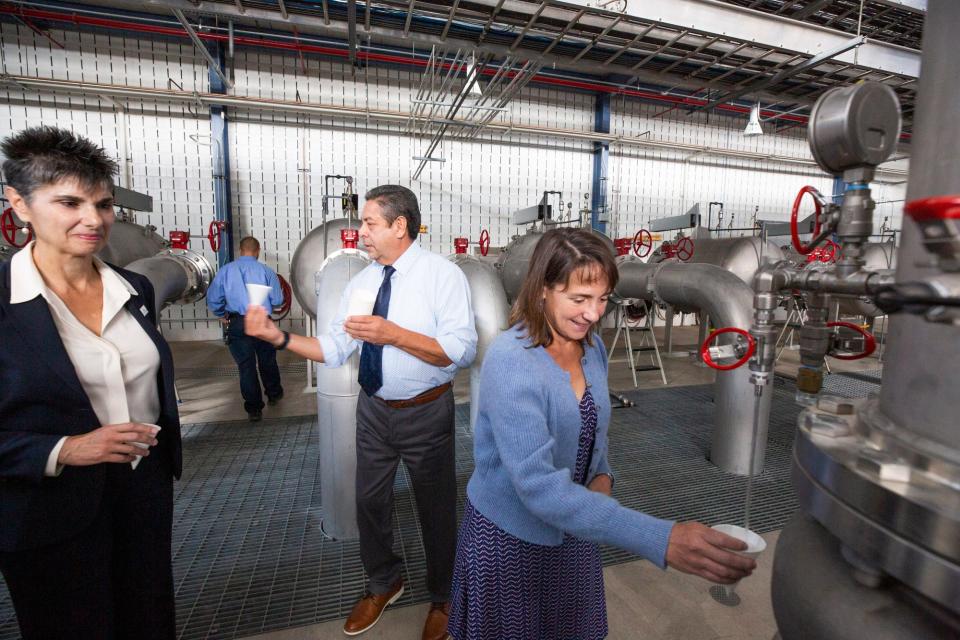
More: 'An outstanding model': El Paso advanced water purification facility gets federal funding
But advocates say that while funding in the bill is transformative for some such cities, the money will fall short across the entire country.
“I do wish people would stop calling it a once-in-a-generation bill,” said Becky Hammer, deputy director of federal water policy at NRDC. “Because we need more investment this generation.”
Erik Olson, a senior strategist at NRDC, said that spread over five years, new money in the bill for water infrastructure comes out to about $10 billion annually. That's a significant boost over regular funding levels, which average less than $3 billion. But with some estimates calling for more than $1 trillion to fully address the nation's water problems, that means it could still take centuries to clear a national backlog unless Congress continues to significantly increase funding.
As with money for transportation, the bill's water funding also flows through state agencies, which are subject to their own whims and often award money to politically connected and wealthy communities. Olson points to reporting around Jackson, which indicates state officials historically steered money away from the majority-Black city, to highlight the problem.
More: Funds to aid Jackson's water system held up as Mississippi Governor Tate Reeves rose
“Unless EPA and states can figure out a way around ... it's going to remain challenging to make sure this money goes to communities that need it most,” Olson said.
Kyle Bagenstose covers climate change, chemicals, water and other environmental topics for USA TODAY. He can be reached at kbagenstose@gannett.com or on Twitter @kylebagenstose.
Contributing: Martha Pskowski, El Paso Times
This article originally appeared on USA TODAY: Biden's infrastructure bill aimed to fight climate change. Is it?

